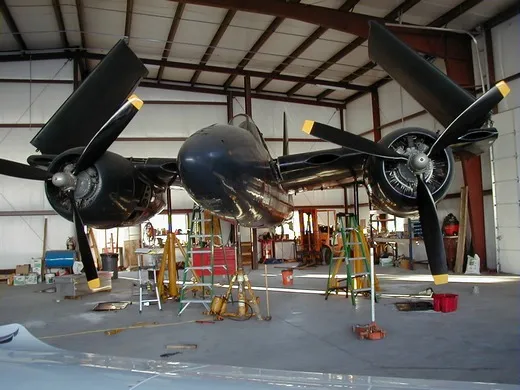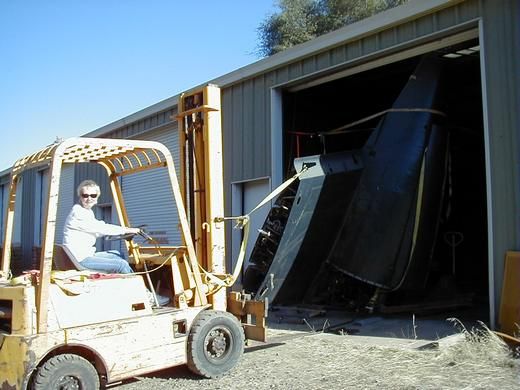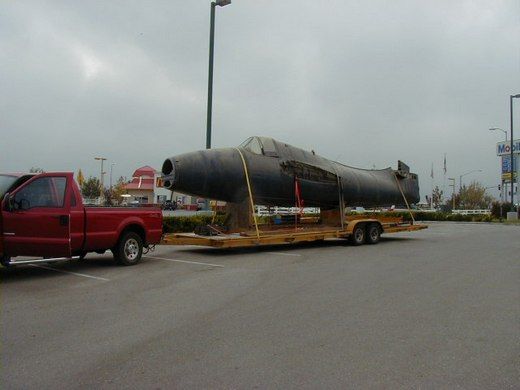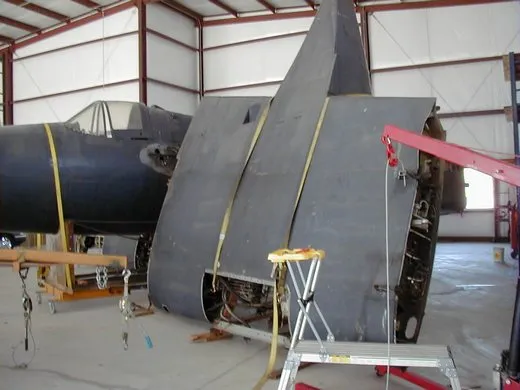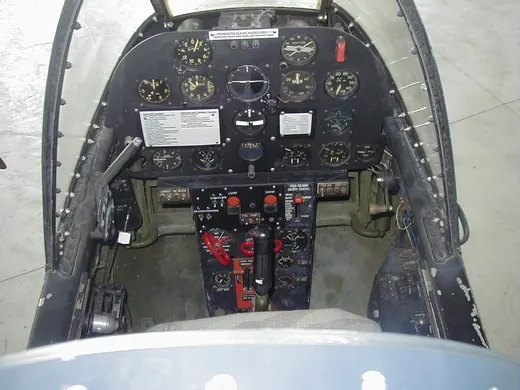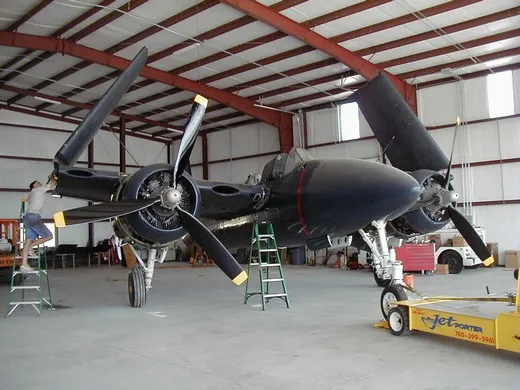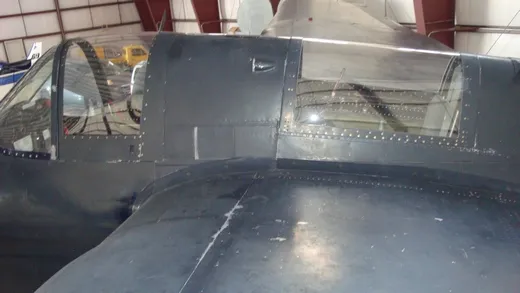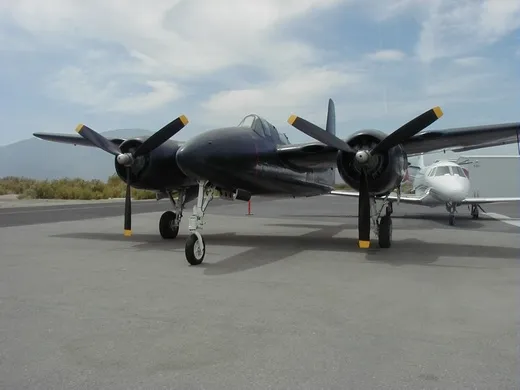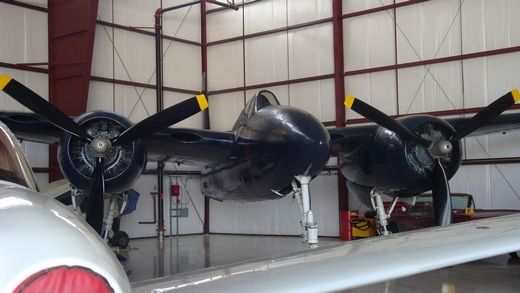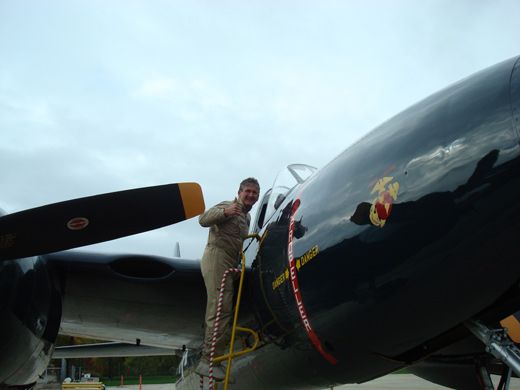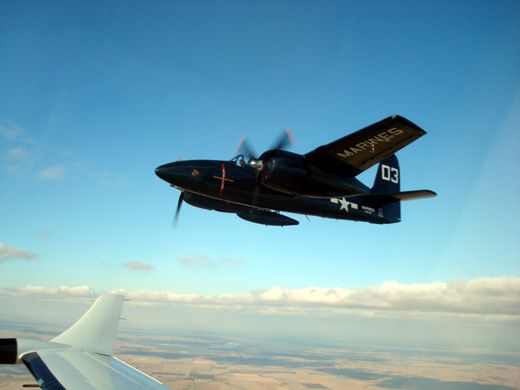Flying Tigercats: And Then There Were Five
A couple of strays join the prowl, and the world’s supply of flyable Grumman F7Fs increases by two-thirds.
/https://tf-cmsv2-smithsonianmag-media.s3.amazonaws.com/filer/tigercat-flash.jpg)
What could possibly get your juices flowing again once you’ve flown 1,000 mph at treetop level in a Lockheed F-104 Starfighter? For legendary test pilot Darryl Greenamyer, the answer was a straight-wing, propeller-driven, downright dowdy-by-comparison airplane that exited the Grumman factory during World War II.
That plane, the F7F Tigercat, was anything but dowdy in its day. Sleek and slender, with two brawny radial engines churning out 2,100 horsepower each, the Tigercat was Grumman’s cheetah, outrunning the company’s other portly felines: the Wildcat, Bearcat, and Hellcat. Of the 364 Tigercats built over three years starting in 1943, only three were flying by the summer of 2008 (look for a photo in the “Sightings” department of our December 2008/January 2009 issue). But two more have just joined their ranks.
Greenamyer still boasts the low-altitude speed record that he set in that F-104 in 1977 (996 mph, 80 feet above the Nevada desert). “Nothing was as fun as that,” he admits. He was a Lockheed test pilot in the company’s heyday, and flew the SR-71 Blackbird beyond 2,000 mph. He’s also one of the most winning—and most enduring—of pilots to compete at the Reno Air Races.
But for the past couple of years, Greenamyer’s been content in the hangar rebuilding his Tigercat, whose top speed doesn’t quite exceed 450 mph. And yes, he says, it’s a thrill to fly. “I can’t remember the projected takeoff roll, but I think on a cool day it’s about 900 feet. That’ll really squash you back in the seat.”
In 1990, Greenamyer traded four airplanes, including a World War II-era B-25 Mitchell bomber, for a flyable Tigercat owned by the U.S. Marine Corps Museum. “I remember flying it out of Quantico [Virginia] on a handheld radio, and just wandering across the country,” he says. He brought it to Ramona, California, just northeast of San Diego, where he kept it for a year. Then he flew it to a small landing strip at his ranch about 10 miles away, where he kept it for several more years parked under a large oak tree. Concerned about corrosion, he took it apart and trucked it up to Mariposa, a small town on the western slope of the Sierra Nevada Mountains outside Yosemite National Park, and stored it in a warehouse.
Fast forward a decade. Greenamyer got the itch to put it back together, this time in Thermal, California, minutes down the road from his current home in Indio, both a short drive southeast of Palm Springs. He hopes to sell the restored Tigercat for $975,000. “I’m gettin’ up in years, and I might as well get rid of it,” he says. “That warehouse is full of what some call junk and others call treasure, and I just don’t need it. I’m gonna kick the bucket some day, and my kids will walk in there and say, ‘What’s this?’ and put a match to it.”
He used a forklift for many of the parts, including the one-ton engines. He used existing steel frames for supports, built a few more, and used chain hoists to get parts off the ground and move them around. He borrowed a set of jacks from a friend at Aerotrader in Chino, California.
“I trailered it down here in three or four loads and began putting it together,” he says. “I guess the hardest part was getting the pieces out of the barn and getting them here.”
Greenamyer worked without any notes or plans, and had his own electronic scales to weigh the aircraft as it came together. “I’ve been in this business for a while, and I’ve rebuilt plenty of airplanes. I knew how to put this one back together because I’m the one who took it apart.”
The fuselage was already in a cradle. To this he attached the main wings, engine nacelles, and landing gear. He had never removed the nose gear, so the tailless plane was soon standing on all three wheels.
Another flight buff and talented mechanic named Dick Welsh happened upon Greenamyer early in the reconstruction, which took about a year and a half. “He just wandered onto the scene and asked, ‘What’re you doing?’ ” Greenamyer recalls. The two became fast friends, putting the plane together slowly and without a hitch, purchasing the occasional nuts and bolts from the local hardware store. Greenamyer reached out to suppliers for more technical needs, such as an ignition lead from a guy who offers old surplus parts out of San Fernando. But most of the airplane was in the same shape as the day he took it apart.
Minor mysteries emerged. For example, when he pushed up on the right tail elevator, the other one didn’t go up. But when he sat in the cockpit and pulled the stick back, they both responded. “I’m sure it wasn’t that way originally,” he says. Unfazed, he plans to fly it anyway.
He took out the extra tank in the back seat area, made a canopy, and installed a passenger seat that he warns is a bit confining. “I figured some guy might want to take his girlfriend up. I wouldn’t want to be the girlfriend.” For now, Greenamyer’s 97-year-old, wheelchair-bound dad, who suffered a stroke a few years back, has insisted he’ll fly in the backseat on the first hop. “Watching me build it has been a real incentive for him. It’s kept him alive.” With October temperatures still in the mid- to high-90’s in his part of California, Greenamyer is holding off flying, and says that when the daytime temperature drops below 80 or so, he’ll fly his Tigercat for the first time in more than a decade.
The other Tigercat that recently joined the ranks of the flying has taken to the air a couple of times. An F7F long owned by the Kalamazoo Air Museum in Michigan, it was made available for sale last spring. Word quickly found its way to airplane collector Rod Lewis, founder and CEO of San Antonio, Texas. He and his aviation department manager, Bob Cardin, headed up to inspect the airplane last spring, and judged it to be in great condition. Lewis made an offer that was accepted, an undisclosed sum. One of the engines was in reasonable condition, but the other needed replacing. Lewis decided to replace both, and promptly ordered them from Idaho, a company that specializes in old radial engines.
Anderson shipped the engines directly to the museum this fall, where Lewis then contracted with Steve Hinton of the Planes of Fame Air Museum in Chino, California, got the nod as pilot.
“Not only is he a pilot,” says Cardin of Hinton, “but an outstanding mechanic. And he knows the Tigercat inside-out and backwards.” Hinton took it up for 20 minutes that morning and proclaimed the airplane in terrific shape. Two days later, he flew it to San Antonio, about six hours total flying time. Cardin flew formation in a Pilatus PC-12 turboprop.
“We flew back at about 6,500 feet and 230 knots indicated,” says Cardin. “Beautiful weather. Not a cloud in the sky. We couldn’t hear him because we were in the pressurized Pilatus. But those giant props spinning right off your wing really grab your attention.”
Cardin says the Tigercat has a minor hydraulic pump glitch and a fuel leak issue, which they knew about before leaving Kalamazoo, and which he’s fixing in San Antonio.
Lewis adds the Tigercat to his collection of 17 war birds, which includes Greenland icecap for half a century, and Rare Bear, the Grumman F8F Bearcat that holds the speed record for piston-driven aircraft at 528 mph. On the commercial side, Lewis owns four helicopters, two modern turboprop aircraft, and two jets.
Cardin says they plan to start putting 50 to 100 hours a year on their new, old Tigercat, and look forward to showing it off at venues like Oshkosh and Reno.
